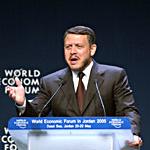As the United States turns up the sanctions heat yet again on Iran's nuclear pretensions, the specter of a Middle East bristling with atomic warheads, fueled by mutual suspicion and ancient hatred, has been created by the Shia-Sunni divide. Over the past year, in reaction to the bellicose rhetoric of Iranian President Mahmoud Ahmadinejad, several Muslim states in the region have quietly declared their own nuclear aspirations. Though the region's rapid, oil-driven, economic growth rate of 5.7 percent in 2006 -- creating an unprecedented strain on the region's power infrastructure -- is a factor, Sunni Muslim fears of Shia Iran's ambitions undoubtedly are a main catalyst of the nuclear surge. The Judeo-Christian West and Islamic East may have a 1,400-year history of violence, but the 1,000-year history of the Sunni-Shia schism has been no less bloody, with the intra-Islamic sectarianism in Iraq being the latest example. Despite Tehran's rhetoric, however, the real Iranian nuclear threat is probably still years away. Even so, the region's Sunni rulers, fearing what it will mean in terms of their regional influence, are desperate not to be left behind by a nuclear Iran. Two years ago, King Abdullah of Jordan warned that Iran's growing influence in Iraq was part of a concerted attempt to "create a Shiite crescent" through the region. Iran's recent proxy wars against Israel, using Hezbollah from Lebanon and Hamas from Gaza, have further alarmed Iran's Sunni Muslim neighbors. In August the respected British defense journal Jane's reported, "Bellicose rhetoric and the increasing influence of Teheran-affiliated Shia groups in Iraq, Lebanon and other Middle Eastern countries, have alarmed Sunni regimes." The report went on to identify that "the near-simultaneous decision of so many Sunni Arab regimes" to pursue nuclear energy programs "raises the possibility of a nuclear arms race among the Islamic countries of the Middle East."
The Shia-Sunni Divide
Sunni States’ Fears of Iran Trigger Middle East Nuclear Race

